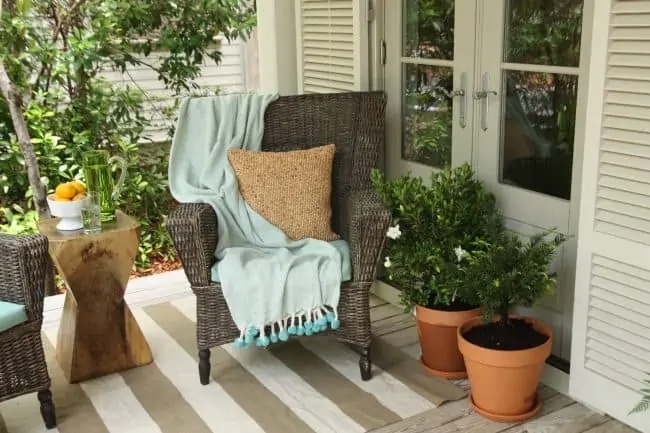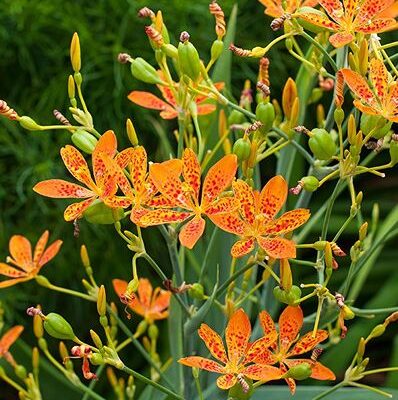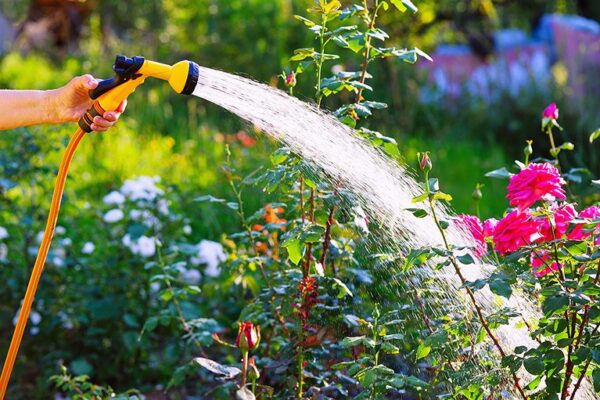Transform 9 spaces with indoor plants
Indoor plants are not only visually appealing, but they also provide a range of benefits to your health and wellbeing. Indoor plants can be a great way to transform a tiny space into a lush and inviting oasis. Plants are natural air purifiers, meaning they absorb carbon dioxide and release oxygen, which helps to improve air quality in your home. This is particularly important in urban areas where air pollution can be a problem. With a little creativity and some strategic plant placement, you can easily transform a tiny space into a plant-filled paradise.
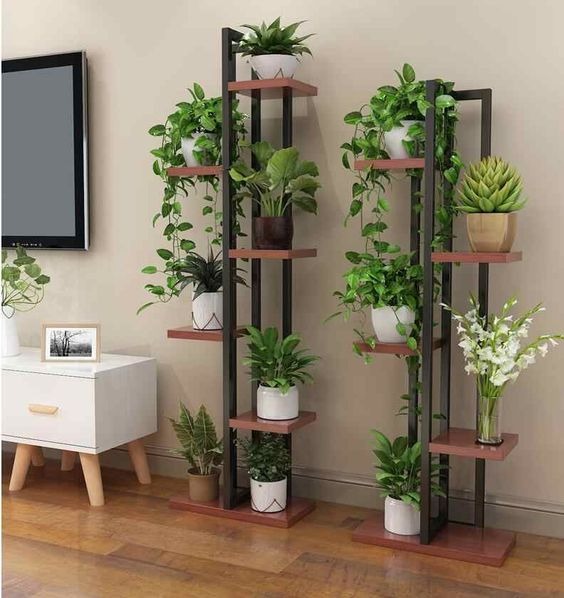
Transforming a tiny space with plants can help create a more relaxing and stress-free environment, promoting a sense of calm and well-being. Studies have also shown that having indoor plants can reduce stress levels and improve mood, making them a great addition to any workspace or living area. Being surrounded by greenery has been shown to have a calming effect on the mind and can help to promote relaxation and reduce anxiety.

Transforming with indoor plants is not only affordable but also an eco-friendly way to add a touch of nature to your surroundings. In addition to their mental health benefits, plants can also improve physical health. Some plants, such as Aloe Vera, have antibacterial properties and can be used to treat minor burns and cuts. Other plants, like the Snake Plant, release oxygen at night, which can improve sleep quality. The right combination of indoor plants can help you transform a tiny space into a beautiful and serene retreat.
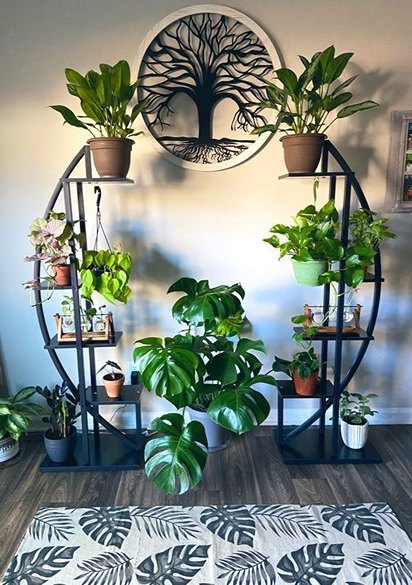
Indoor plants can also be used as natural humidifiers, helping to increase the moisture levels in your home. This can be particularly helpful during the winter months when the air inside can become dry due to heating systems. Plants like the Peace Lily and Spider Plant are particularly effective at increasing humidity.
Indoor plants can be a great way to decorate your home, adding pops of color and texture to any room. Plants can be used as a focal point in a room or as a subtle accent to complement your decor. They come in a wide range of shapes and sizes, so there is sure to be a plant to suit any style or preference. Plus, caring for plants can be a fun and rewarding hobby, helping you to connect with nature and bring a sense of calm to your daily routine. Whether you prefer lush greenery or vibrant blooms, indoor plants are a versatile decorating option that can help transform a tiny space.
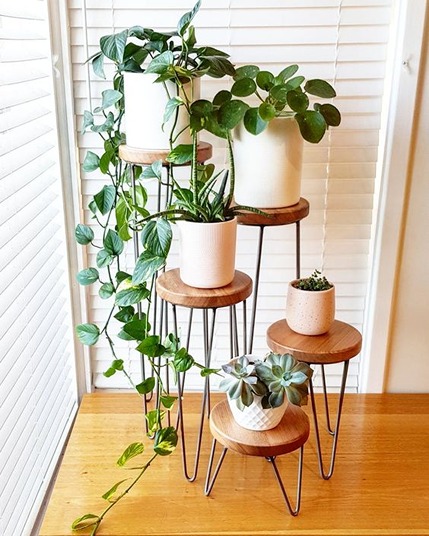
Plants are a great way to purify the air in your home, helping you breathe easier. With indoor plants, you can add life and energy to any room. Whether you prefer low-maintenance or high-maintenance plants, there is an indoor plant for you.
1. Entryway
The entryway of your home is the first impression that guests will have of your space, so it’s important to create a welcoming and inviting atmosphere. Adding indoor plants to your entryway can help to create a natural and calming ambiance. Here are some ways to decorate your entryway with plants:
- Console Table
A console table is a great place to display a small potted plant. You can choose a plant that complements the décor of your entryway, such as a snake plant or a peace lily. Place the plant in a decorative pot and add some pebbles or rocks to create a polished look.
- Wall Planter
If you have limited space in your entryway, consider adding a wall planter. You can choose a planter with multiple tiers and plant a variety of different plants to create a lush and vibrant display. Hang the wall planter at eye level so that it’s visible to guests as they enter your home.
- Floor Plant
If you have a larger entryway, consider adding a floor plant. A large potted plant such as a fiddle leaf fig or a rubber tree can add height and drama to your entryway. Place the plant in a decorative pot and add a layer of pebbles or rocks to create a polished look.
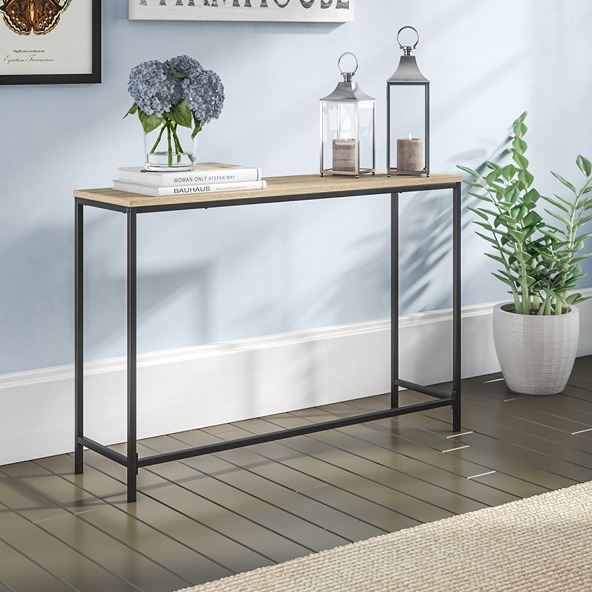
2. Living room
The living room is the heart of the home, where family and friends come together to relax and socialize. Adding plants to your living room can help to create a calming and inviting atmosphere. Here are some ways to decorate your living room with indoor plants:
- Large Plant
A large indoor plant such as a palm tree or a bird of paradise can add a touch of tropical elegance to your living room. Place the plant in a decorative pot and position it near a window where it can receive plenty of sunlight.
- Clustered Plants
Create a cluster of plants of varying heights and sizes to add dimension and texture to your living room. Choose plants such as snake plants, spider plants, and pothos to create a lush and vibrant display.
- Hanging Plants
Hanging plants can be a great way to add greenery to your living room without taking up any floor space. Hang a trailing plant such as a spider plant from the ceiling using a decorative macramé hanger.
- Wall Planter
If you have limited floor space in your living room, consider adding a wall planter. You can choose a planter with multiple tiers and plant a variety of different plants to create a natural and organic display.
- Succulent Garden
Create a mini succulent garden on your coffee table or side table. Use a shallow dish and plant a variety of succulents to create a low-maintenance and stylish display.
- Bonsai Tree
A bonsai tree can add a touch of Zen to your living room. Choose a small bonsai tree and place it on a decorative tray or stand to create a peaceful and serene atmosphere.
- Herb Garden
If you love to cook, consider creating an herb garden in your living room. Plant herbs such as basil, rosemary, and thyme in decorative pots and place them on a windowsill or shelf.

3. Dining room
The dining room is where family and friends gather to share meals and make memories. Adding indoor plants to your dining room can help to create a cozy and inviting atmosphere. Here are some ways to decorate your dining room with indoor plants:
- Centerpiece
Create a beautiful centerpiece for your dining room table with a large floral arrangement or a collection of potted plants. Choose plants that complement the colors and style of your dining room, such as succulents or flowering plants.
- Wall Planter
A wall planter can be a unique and eye-catching way to display indoor plants in your dining room. You can choose a planter with multiple tiers and plant a variety of different plants to create a natural and organic display.
- Herb Garden
If you love to cook, consider creating an herb garden in your dining room. Plant herbs such as basil, rosemary, and thyme in decorative pots and place them on a windowsill or shelf.
- Topiary
A topiary can add a touch of elegance and sophistication to your dining room. Choose a small topiary such as a rosemary tree or a boxwood ball and place it on a decorative stand or pedestal.
- Table Runner
Create a living table runner by planting a row of small succulents or cacti in a long, shallow planter. Place the planter down the center of your dining room table to create a low-maintenance and stylish display.
- Terrarium
A terrarium is a unique and stylish way to display indoor plants in your dining room. You can create a small terrarium with succulents or air plants and place it on a decorative tray on your dining room table.
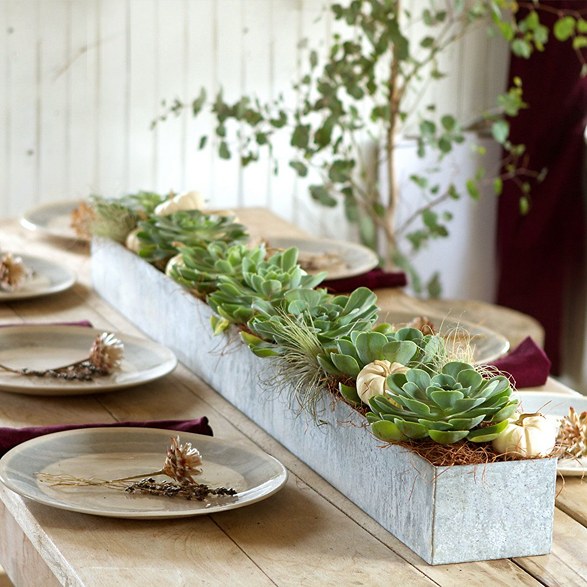
4. Kitchen
The kitchen is often referred to as the heart of the home, where meals are prepared and memories are made. Adding plants to your kitchen can help to create a fresh and vibrant atmosphere. Here are some ways to decorate your kitchen with indoor plants:
- Herb Garden
Create an herb garden in your kitchen by planting herbs such as basil, parsley, and cilantro in decorative pots. Place them on a windowsill or shelf where they can receive plenty of sunlight and be easily accessible while cooking.
- Hanging Plants
Hanging plants can be a great way to add greenery to your kitchen without taking up any counter or floor space. Hang a trailing plant such as a spider plant or a pothos from the ceiling using a decorative macramé hanger.
- Window Sill Garden
If you have a sunny windowsill in your kitchen, consider creating a small garden with a collection of small pots filled with succulents, herbs, or small flowering plants.
- Topiary
A small topiary such as a rosemary tree or a boxwood ball can add a touch of elegance and sophistication to your kitchen. Place it on a decorative stand or pedestal on your kitchen counter.
- Fruit Trees: If you have a sunny spot in your kitchen, consider growing a small citrus or fruit tree such as a lemon tree or a fig tree. These trees can add a touch of natural beauty to your kitchen while also providing fresh fruit.
- Aloe Vera
Aloe vera is a low-maintenance plant that can be grown in the kitchen. It has medicinal properties and its leaves can be used for a variety of purposes, including as a natural remedy for burns and cuts.
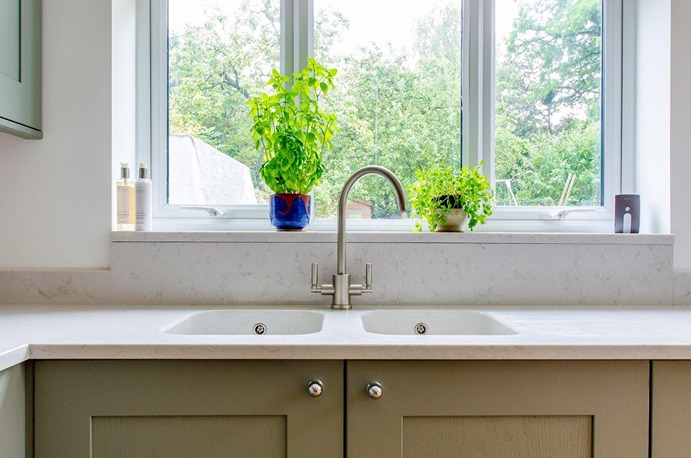
5. Hallway
The hallway is often an overlooked area of the home when it comes to decorating, but it can be the perfect spot for indoor plants. Adding plants to your hallway can help to create a welcoming and inviting atmosphere. Here are some ways to decorate your hallway with indoor plants:
Hanging Plants: Hanging plants can be a great way to add greenery to your hallway without taking up any floor space. Hang a trailing plant such as a string of pearl from the ceiling using a decorative macramé hanger.
- Small Potted Plants
Small potted plants such as succulents or air plants can be placed on a decorative tray or shelf in your hallway. These low-maintenance plants are easy to care for and can add a touch of natural beauty to your space.
- Tree
If you have a large hallway, consider adding a small tree such as a fiddle leaf fig or a rubber tree. These plants can add a dramatic touch to your space and help to create a natural and organic atmosphere.
- Tabletop Garden
Create a small tabletop garden with a collection of small pots filled with succulents or herbs. Place them on a console table or sideboard in your hallway to create a fresh and inviting display.
- Terrarium: A terrarium can be a unique and stylish way to display indoor plants in your hallway. You can create a small terrarium with succulents or air plants and place it on a decorative tray on your console table.
- Corner Plant Stand
If you have an empty corner in your hallway, consider adding a corner plant stand. This can be a great way to add some height to your space while also adding a touch of natural beauty.
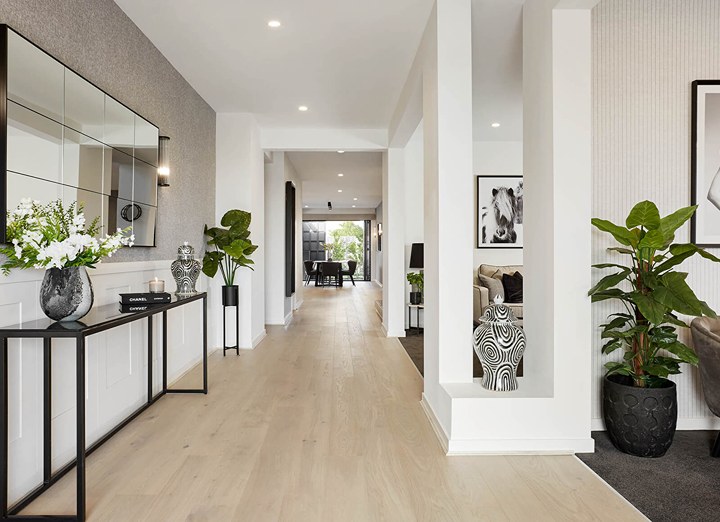
6. Sunroom
A sunroom is a perfect space for indoor plants because it’s typically filled with natural light and often has large windows that allow plants to thrive. Whether you’re looking to create a jungle-like oasis or just want to add a few pops of greenery, here are some ways to decorate your sunroom with plants:
- Vertical Garden
A vertical garden is a great way to add a lot of plants to a small space. You can create a wall of planters or even use a shelving unit to create a tiered display.
- Large Potted Plants
Sunrooms are often large spaces, which means you can get away with adding larger plants. Consider adding a tall tree such as a fiddle leaf fig or a bird of paradise to add a dramatic touch to your space.
- Window Sill Garden
If you have a sunny windowsill in your sunroom, consider creating a small garden with a collection of small pots filled with succulents, herbs, or small flowering plants.
- Tabletop Garden
Create a small tabletop garden with a collection of small pots filled with succulents or herbs. Place them on a coffee table or side table in your sunroom to create a fresh and inviting display.
- Succulent Garden
Succulents are low-maintenance plants that come in a variety of shapes and sizes, making them perfect for a sunroom. Consider creating a succulent garden in a decorative bowl or tray to add a touch of natural beauty to your space.
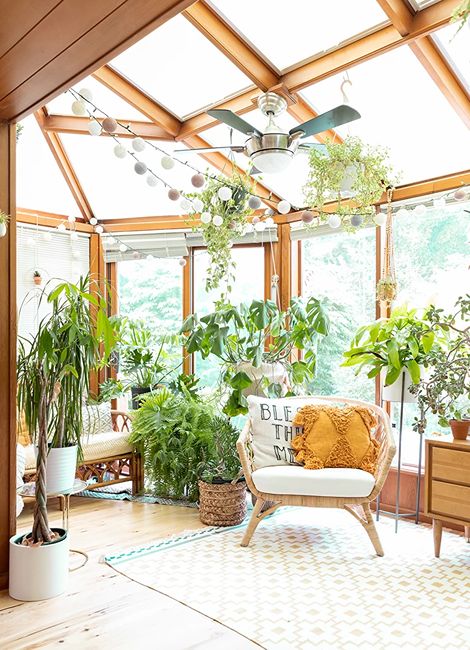
7. Staircase
Staircases are often overlooked when it comes to decorating, but they can be the perfect spot for indoor plants. Adding plants to your staircase can help to create a natural and organic atmosphere in your home. Here are some ways to decorate your staircase with indoor plants:
- Wall Planter
A wall planter can be a unique and eye-catching way to display indoor plants on your staircase. You can choose a planter with multiple tiers and plant a variety of different plants to create a natural and organic display.
- Small Potted Plants
Small potted plants such as succulents or air plants can be placed on each step of your staircase to create a natural and inviting display.
- Tree
If you have a large staircase, consider adding a small tree such as a fiddle leaf fig or a rubber tree. These plants can add a dramatic touch to your space and help to create a natural and organic atmosphere.
- Tabletop Garden
Create a small tabletop garden with a collection of small pots filled with succulents or herbs. Place them on a console table or sideboard on your landing to create a fresh and inviting display.
- Corner Plant Stand
If you have an empty corner on your landing, consider adding a corner plant stand. This can be a great way to add some height to your space while also adding a touch of natural beauty.
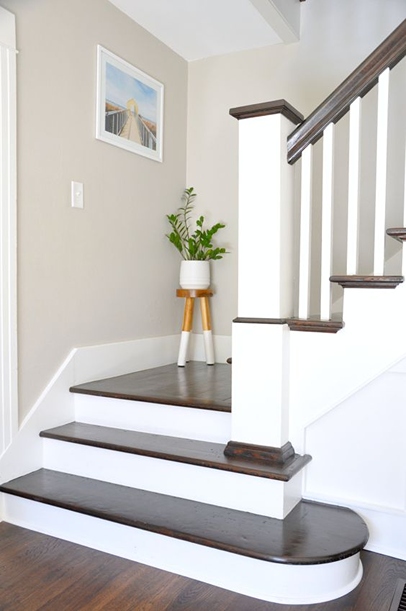
8. Home Office
Adding indoor plants to your home office can help to create a calming and refreshing atmosphere that can boost your productivity and creativity. Here are some ways to decorate your home office with indoor plants:
- Bookshelf Plants
Adding a few small potted plants to your bookshelf can help to create a natural and refreshing display. Consider adding plants such as spider plants or ferns that can thrive in low-light conditions.
- Cactus Garden
If you are looking for a low-maintenance option, consider creating a small cactus garden in a decorative bowl or tray. Cacti are easy to care for and can add a touch of natural beauty to your workspace.
- Desk Plants
Small potted plants such as succulents, cacti, or peace lilies can be placed on your desk to add some natural beauty to your workspace. These plants can help to improve air quality, reduce stress, and increase productivity.
- Floor Plants
If you have enough space, consider adding a larger potted plant such as a snake plant or a rubber tree. These plants can help to purify the air and add a touch of natural beauty to your workspace.
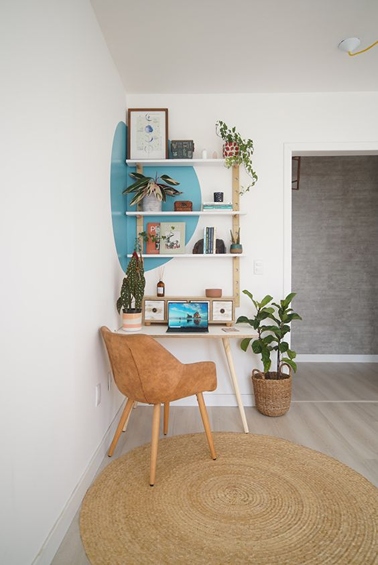
9. Patio
Patios are an ideal space to decorate with indoor plants as they can add a touch of natural beauty to your outdoor space while also creating a relaxing and calming atmosphere. Here are some ways to decorate your patio with indoor plants:
- Privacy Plants
If you are looking to add some privacy to your patio, consider adding tall plants such as bamboo or grasses. These plants can help to create a natural screen while also adding some natural beauty to your outdoor space.
- Water Features
Water features such as fountains or ponds can be a great addition to your patio. You can add aquatic plants such as water lilies or lotus plants to add some natural beauty to the water feature.
- Hanging Plants
Hanging plants can be a great way to add greenery to your patio without taking up any floor space. Hang a trailing plant such as a fern or an ivy from the ceiling using a decorative macramé hanger.
- Floor Plants
If you have enough floor space on your patio, consider adding a larger potted plant such as a Ficus or a palm tree. These plants can help to purify the air and add a touch of natural beauty to your outdoor space.
- Wall Planter
A wall planter can be a unique and eye-catching way to display indoor plants on your patio. You can choose a planter with multiple tiers and plant a variety of different plants to create a natural and organic display.
- Herb Garden
If you love to cook, consider creating an herb garden on your patio. You can plant herbs such as basil, mint, and rosemary in small pots and place them on a table or shelf.
- Vertical Garden
A vertical garden can be a great way to add some natural beauty to your patio while also saving space. You can create a vertical garden by attaching planters to a trellis or wall.
- Succulent Garden
If you are looking for a low-maintenance option, consider creating a small succulent garden in a decorative bowl or tray. Succulents are easy to care for and can add a touch of natural beauty to your outdoor space.
- Trees
Trees such as citrus trees or olive trees can be a great addition to your patio. These trees can provide shade and privacy while also adding some natural beauty to your outdoor space.
